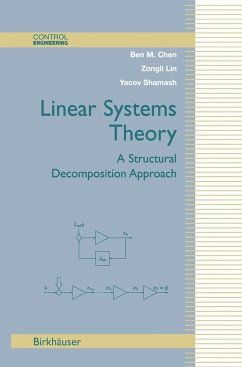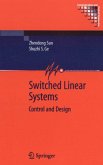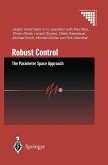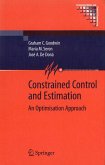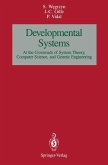This text is the first comprehensive treatment of structural decompositions of various types of linear systems, including autonomous, unforced or unsensed, strictly proper, non-strictly proper, and descriptor or singular systems. Structural properties play an important role in the understanding of linear systems and also provide insight to facilitate the solution of control problems related to stabilization, disturbance decoupling, robust and optimal control. Applications can be extended to industrial process control, aircraft and ship control, process automation control, and many other types of engineering systems.
The authors employ a unique structural decomposition approach to break down an overall system into various subsystems, each with distinct features. The simplicity of these subsystems and their interconnections leads to deep insight about the design of feedback control systems for desired closed-loop performance, stability, and robustness.
Structural properties play an important role in our understanding of linear systems in the state space representation. The structural canonical form representation of linear systems not only reveals the structural properties but also facilitates the design of feedback laws that meet various control objectives. In particular, it decomposes the system into various subsystems. These subsystems, along with the interconnections that exist among them, clearly show the structural properties of the system. The simplicity of the subsystems and their explicit interconnections with each other lead us to a deeper insight into how feedback control would take effect on the system, and thus to the explicit construction of feedback laws that meet our design specifications. The discovery of structural canonical forms and their applications in feedback design for various performance specifications has been an active area of research for a long time. The effectiveness of the structural decomposition approach has also been extensively explored in nonlinear systems and control theory in the recent past. The aim of this book is to systematically present various canonical represen tations of the linear system, that explicitly reveal different structural properties of the system, and to report on some recent developments on its utilization in sys tem analysis and design.
The authors employ a unique structural decomposition approach to break down an overall system into various subsystems, each with distinct features. The simplicity of these subsystems and their interconnections leads to deep insight about the design of feedback control systems for desired closed-loop performance, stability, and robustness.
Structural properties play an important role in our understanding of linear systems in the state space representation. The structural canonical form representation of linear systems not only reveals the structural properties but also facilitates the design of feedback laws that meet various control objectives. In particular, it decomposes the system into various subsystems. These subsystems, along with the interconnections that exist among them, clearly show the structural properties of the system. The simplicity of the subsystems and their explicit interconnections with each other lead us to a deeper insight into how feedback control would take effect on the system, and thus to the explicit construction of feedback laws that meet our design specifications. The discovery of structural canonical forms and their applications in feedback design for various performance specifications has been an active area of research for a long time. The effectiveness of the structural decomposition approach has also been extensively explored in nonlinear systems and control theory in the recent past. The aim of this book is to systematically present various canonical represen tations of the linear system, that explicitly reveal different structural properties of the system, and to report on some recent developments on its utilization in sys tem analysis and design.

